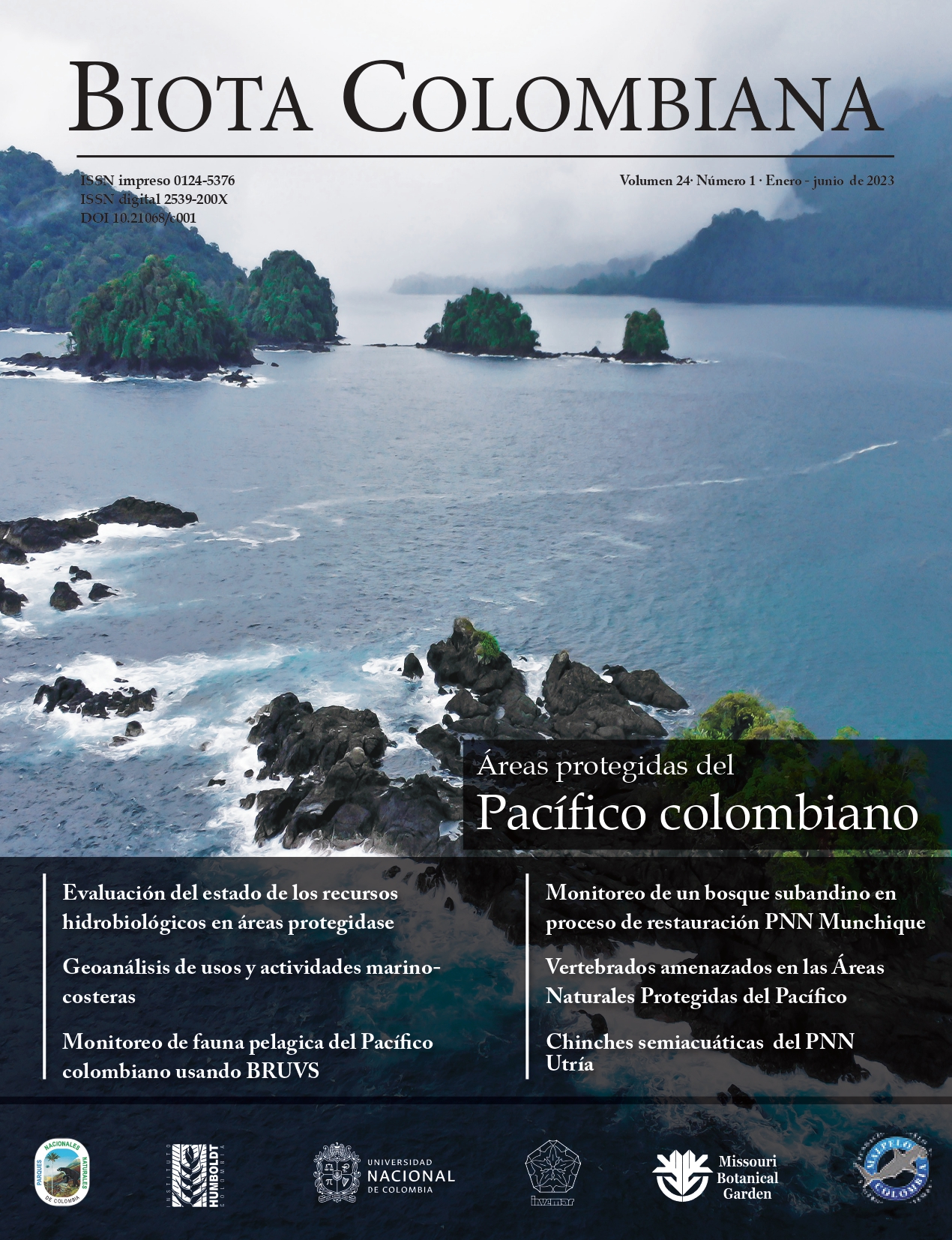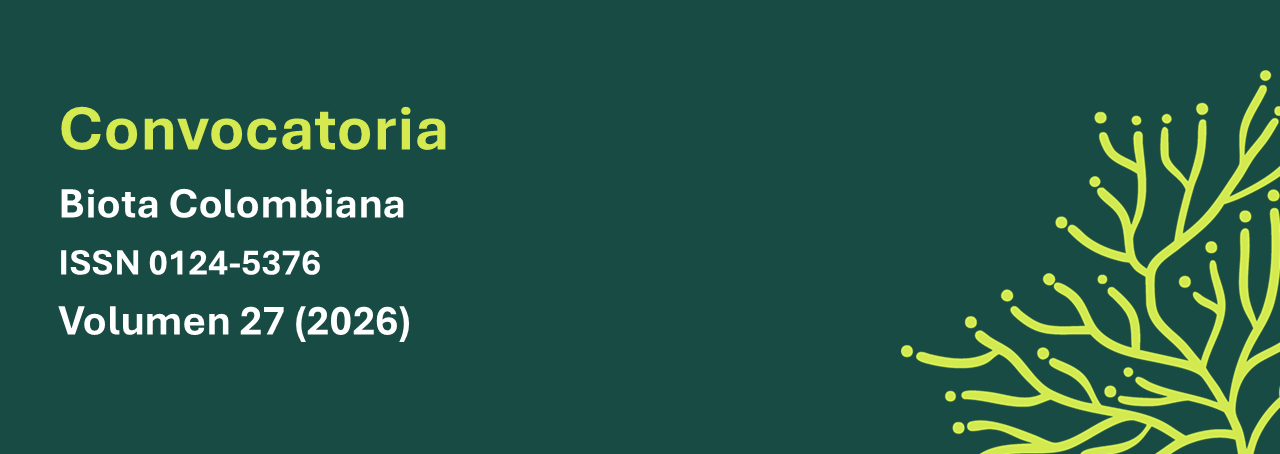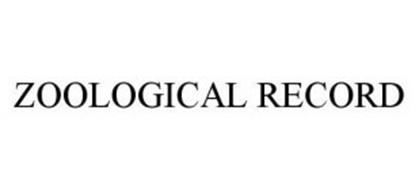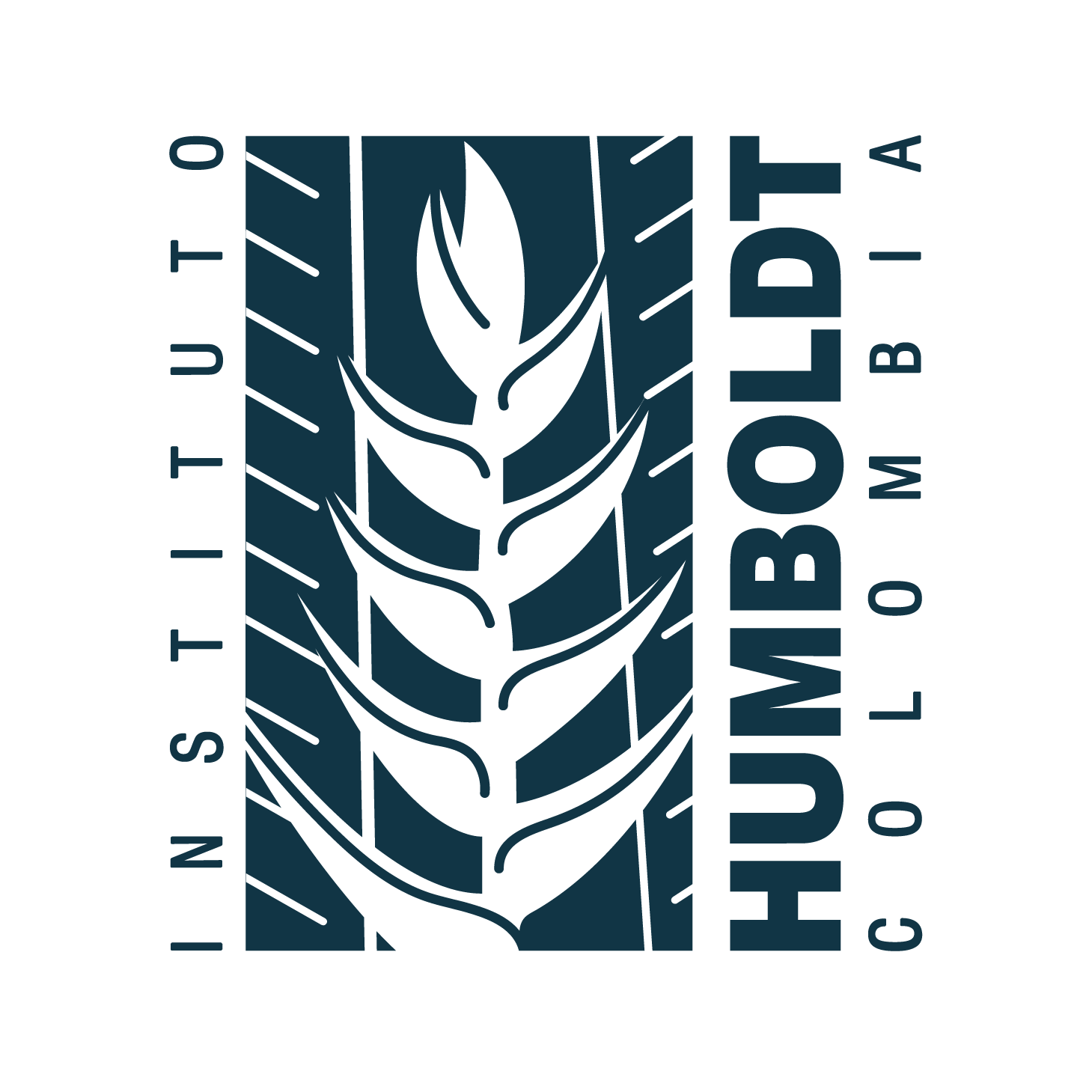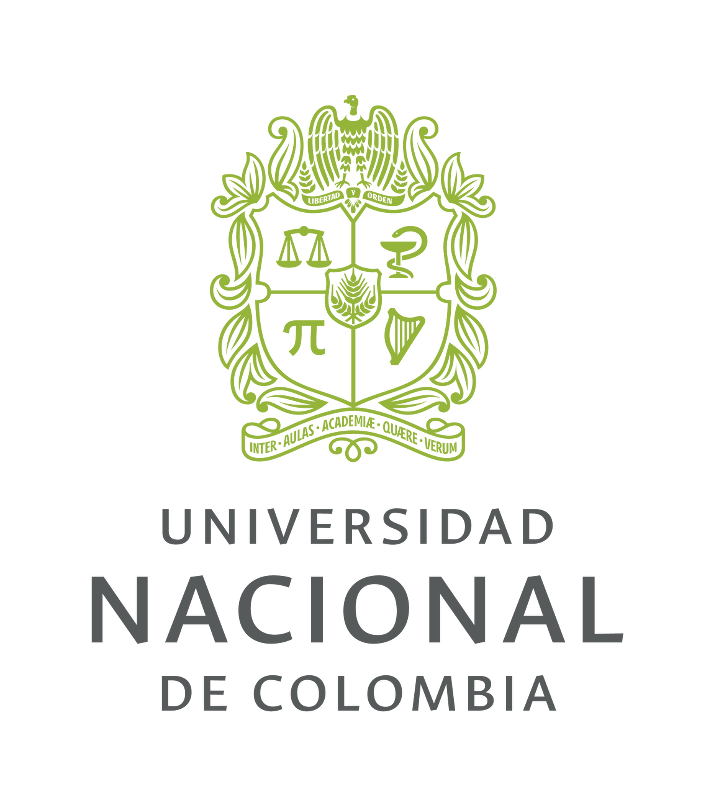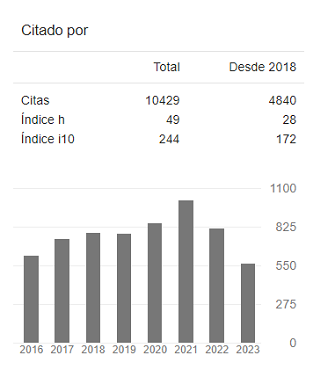Resumen (es):
Se registra por primera vez el género de dinoflagelado Metadinophysis (Dinophyceae: Dinophysales) en la bahía de Buenaventura y el Parque Nacional Natural Uramba- PNN Uramba en Bahía Málaga del Pacífico colombiano central, se analiza su densidad con los cambios de marea. Se registraron células con contorno subtriangular y reniforme en vista ventral, epiteca pequeña. Aleta sulcal izquierda con tres costillas y la derecha muy reducida o ausente, presentando tamaño promedio 43.1 m de longitud total y 25.0 m de ancho total, la densidad del género se analizó bajo cuatro factores, la marea alta y la marea baja en la bahía de Buenaventura y en la bahía de Málaga. Se encontraron diferencias significativas entre la densidad en la marea alta y la marea baja para la bahía de Buenaventura, la diferencia entre la marea alta de la bahía de Málaga y la marea baja de la bahía de Buenaventura. Asimismo, se estableció que la distribución de la densidad no tiene ninguna estructura espacial en ninguno de los eventos mareales. Con el presente estudio se registra por primera vez el género de Metadinophysis en el pacífico colombiano, ampliando su distribución a nivel global.
Resumen (en):
The dinoflagellate genus Metadinophysis (Dinophyceae: Dinophysales) is recorded for the first time in the bay of Buenaventura and Uramba National Natural Park-PNN Uramba in Bay Málaga in the central Colombian Pacific and its density is analyzed with tidal changes. Cells were recorded with subtriangular and reniform outline in ventral view and small epitheca. Left sulcal fin with three ribs and the right one very reduced or absent, presenting average size 43.1 μm total length and 25.0 μm total width, the density of the genus was analyzed under four factors, high tide and low tide in Buenaventura Bay and in Malaga Bay; significant differences were found between the density at high tide and low tide for Buenaventura Bay, the difference between high tide in Malaga Bay and low tide in Buenaventura Bay. Likewise, it was established that the density distribution has no spatial structure in any of the tidal events. With the present study, the genus Metadinophysis is recorded for the first time in the Colombian Pacific, extending its distribution globally.
Palabras clave:
Density, Phytoplankton, Dinoflagellates, Pacific Ocean, First record (en)
Referencias
Affe, D. J. H. M., Conceição, L. P., Rocha, D. S. B., Proença, L. A. de O., & Nunes, J. M. de C. (2021). Phytoplankton community in a tropical estuarine gradient after an exceptional harmful bloom of Akashiwo sanguinea (Dinophyceae) in the todos os santos Bay. Ocean and Coastal Research, 69. https://doi.org/10.1590/2675-2824069.20-004hmdja
Affe, H. M., de Castro-Nunes, J. M. de C., de Oliveira-Proença, L. A., Fonseca, R. S., & Menezes, M. (2019). First record of the dinoflagellate Metadinophysis sinensis (Dinophysales, Dinophyceae) in the Atlantic Ocean. Phytotaxa, 420(1), 79–83. https://doi.org/10.11646/phytotaxa.420.1.6
Arteaga-Sogamoso, E., & Perdomo-Trujillo, L. V. (2016). NOTA: Distribución, Frecuencia y Abundancia del Fitoplancton y Potencialmente Toxígeno en la Cuenca Pacífica Colombiana. Boletín de Investigaciones Marinas y Costeras, 45(1). https://doi.org/10.25268/bimc.invemar.2016.45.1.635
Balech, E. (1988). Los dinoflagelados del Atlántico sudoccidental. Ministerio de Agricultura, Alimentación y Medio Ambiente
Cantera, J., Thomassin, B., & Arnaud, P. (1999). Faunal zonation and assemblages in the Pacific Colombian mangroves. Hydrobiologia, 413, 17–33. https://doi.org/http://doi.org/10.1007/978-94-011-4078-2_3
Castillo, F. A., & Vizcaíno, B. Z. (1993). Observación del fitoplancton del Pacífico colombiano durante 1991-1992 en condiciones El Niño. Bulletin de l’Institut Français d’études Andines, 179–190.
Castillo, F. A., & Vizcaino, Z. (1992). Los indicadores biológicos del fitoplancton y su relación con el fenómeno de El Niño 1991-92 en el Pacífico colombiano. Boletín. Científico CIOH, 12, 13–22. https://doi.org/https://doi.org/10.26640/22159045.47
Dias-Alves, L. (2017). Variabilidade espaço-temporal da comunidade fitoplanctônica em um complexo estuarino de região tropical, no nordeste do Brasil No Nordeste Do Brasil. Universidade Federal Da Bahia.
Edler, L., & Elbrächter, M. (2010). The Utermöhl method for quantitative phytoplankton analysis. In Karlson Bengt, Cusack Caroline, & Bresnan Eileen (Eds.), Microscopic and Molecular Methods for Quantitative Phytoplannkon Anlisys (pp. 1–110). UNESCO. (IOC Manuals and Guides, no. 55.).
Escalera, L., & Reguera, B. (2008). Planozygote division and other observations on the sexual cycle of several species of Dinophysis (Dinophyceae, Dinophysiales). Journal of Phycology, 44(6), 1425–1436. https://doi.org/10.1111/j.1529-8817.2008.00610.x
Escobar, I. X. G., Suarique, K. D. Á., & Sotelo, M. A. B. (2012). Diagnóstico de la situación portuaria de Buenaventura para realizar comercio Asia Pacífico. Universidad del Rosario.
Falasco, E., Bona, F., Badino, G., Hoffmann, L., & Ector, L. (2009). Diatom teratological forms and environmental alterations: A review. Hydrobiologia, 623(1), 1–35. https://doi.org/10.1007/s10750-008-9687-3
Foster, R. A., Collier, J. L., & Carpenter, E. J. (2006). Reverse transcription PCR amplification of cyanobacterial symbiont 16S rRNA sequences from single non-photosynthetic eukaryotic marine planktonic host cells. Journal of Phycology, 42(1), 243–250. https://doi.org/10.1111/j.1529-8817.2006.00185.x
Fraga, S., & Barkun, A. (1993). Global climate change and harmful algal blooms: the example of on the Galician coast Gymnodinium catenatum. Toxic Phytoplankton Blooms in the Sea, 59–65.
Galeano-Chavarría, M. A., & Arteaga-Sogamoso, E. (2010). Distribución y abundancia de diatomeas del género Pseudo-nitzschia en condición de El Niño 2007 sobre la cuenca pacífica colombiana. Boletín de Investigaciones Marinas y Costeras, 39(1), 25–39. https://doi.org/10.25268/bimc.invemar.2010.39.1.140
García-Hansen, I., Cortés-Altamirano, R., & Sierra-Beltrán, A. P. (2004). La marea roja causada por el dinoflagelado Alexandrium tamarense en la costa Pacífica colombiana (2001). Revista Biología Tropical, 52(1), 59–68.
Gómez, F. (2012). A checklist and classification of living Dinoflagellates (Dinoflagellata, Alveolata). CICIMAR Oceanides, 27(1), 65–140. https://doi.org/10.37543/oceanides.v27i1.111
Guiry, M. D., & Guiry, G. (2021). AlgaeBase. World-wide electronic publication. Algaebase. Org; National University of Ireland. http://www.algaebase.org
Gyi, K. K., Nwe, W. T., Zaw, Z. Z., & San, K. K. (2020). Seasonal abundance and distribution of phytoplankton in Tanintharyi coastal waters, southern Myanmar. Revista Bionatura, 5(3), 1203–1208. https://doi.org/10.21931/RB/2020.05.03.6
Hoyos Acuña, J. J., Quintana-Manotas, H. L., Bermúdez-Rivas, C., Molina-Triana, A. F., Castrilllón- Valencia, F. A., & Parada-Gutiérrez, J. L. (2021). Listado de especies de fitoplancton en la bahía de Tumaco, Pacífico colombiano. Revista Del Instituto de Investigaciones Tropicales, 214–231. https://doi.org/10.21676/23897864.4064
Kofoid, A. C., & Skogsberg, T. (1928). The Dinoflagellata: The Dinophysoidae. Memoirs of the Museum of Comparative Zoology. Harvard, 51, 13–750. https://doi.org/10.5962/bhl.title.49346
Lalli, C., & Parsons, T. R. (1997). Biological oceanography: an introduction. Elsevier.
Larsen J. (2002). Dinoflagelados atecados potencialmente toxígenos en el cono sur Americano. In E. Sar, M. Ferrario, & B. Reguera (Eds.), Floraciones Algales Nocivas En El Cono Sur Americano (pp. 147–154). Instituto Español de Oceanografía.
Lin, S. (2011). Genomic understanding of dinoflagellates. Research in Microbiology, 162(6), 551–569. https://doi.org/10.1016/j.resmic.2011.04.006
Lirdwitayaprasit, T., Meksumpun, S., Sriwoon, R., & Srivilai, D. (2010). HAB Occurrences and research activities during the last decade in Thai aters. Horiba International Conference “New Direction of Ocean Research in the Western Pacific” – Past, Present and Future of UNESCO/IOC/WESTPAC Activity for 50 Years and the JSPS Project “Coastal Marine Science.,” 104.
Maldonado, J. (1978). Observaciones realizadas sobre el fenómeno de marea roja presentado en aguas del pacífico colombiano en los meses de julio a septiembre de 1976. INDERENA, 2, 1–6.
Nguyen, V. N. (2016). Dinophysis.
Nie, D., & Wang, C. C. (1941). Dinoflagellata of the Hainan waters, III.On Metadinophysis sinensis, a new genus and specie of Dinophysidae. Sinensia, 12, 212–225.
Nunes, C. C. D. S., Susini-Ribeiro, S. M. M., & Cavalcante, K. P. (2019). Dinoflagellates in tropical estuarine aters from the maraú river, camamu bay, northeastern Brazil. Check List, 15(5), 951–963. https://doi.org/10.15560/15.5.951
Ojeda-Rodríguez, A. (1998). Dinoflagelados de Canarias: estudio taxonómico y ecológico. Universidad de las Palmas de Gran Canarias.
Omura, T., Lwataki, M., Borja, V. M., Takayama, H., & Fukuyo, Y. (2012). Marine Phytoplankton of the Western Pacific (Kouseisha Kouseikaku).
Osorio-Cardoso, J. S. (2019). Comunidad fitoplanctónica de tres áreas portuarias del pacífico colombiano y su relación con algunas variables ambientales, inclusive el tráfico marino. Universidad de Bogotá Jorge Tadeo Lozano.
Ramírez, D. G., & Giraldo López, A. (2006). Estructura comunitaria del fitoplancton de la cuenca Pacífica colombiana durante la campaña oceanográfica Pacífico XXXIX-ERFEN XXXVII. Boletín Científico CCCP, 13, 65–84. https://doi.org/10.4067/s0717-71782006000200023
Reguera, B. (1993). Trends in the occurrence of Dinophysis spp. In Galician waters. In Reguera Beatriz, Bravo Isabel, Campo-Loriz María Jesús, Fraga Santiago, & Carbonell Ana (Eds.), Toxic Phytoplankton Blooms in the Sea (pp. 559–564).
Reguera, B., & González-Gil, S. (2001). Small cell intermediate cell formation in species of Dinophysis (Dinophyceae,Dinophysiales). J. Phycol, 37, 318–333. https://doi.org/10.1046/j.1529-8817.2001.037002318.x
Reguera, B., González-Gil, S., & Delgado, M. (2007). Dinophysis diegensis is a life history stage of Dinophysis caudata (Dinophyceae, Dinophysiales). Journal of Phycology, 43(5), 1083–1093. http://doi.org/10.1111/j.1529-8817.2007.00399.x
Rey, S. J., & Anselin, L. (2007). PySAL: A Python Library of Spatial Analytical Methods. The Review of Regional Studies, 37(1), 5–27.
Riascos, J. M., & Jörg Urban, H. (2002). Dinámica poblacional de Donax dentifer (Veneroida: Donacidae) en Bahía Málaga, Pacífico colombiano durante el fenómeno “El Niño” 1997/1998. Revista de Biología Tropical, 50, 1113–1123.
Rojas Higuera, P. J., & Ortiz, J. R. (2007). Comportamiento del fitoplancton durante el Evento ENOS en el Oceáno Pacífico. Centro Control de Contaminación del Pacífico.
Saldarriaga, J. F., & Taylor, F. J. R. (2017). Dinoflagellata. In Handbook of the Protists (pp. 1–54). Springer International Publishing. https://doi.org/10.1007/978-3-319-32669-6_22-1
Su-Myat, Maung-Saw-Htoo-Thaw, Matsuoka, K., Khin-Ko-Lay, & Koike, K. (2012). Phytoplankton surveys off the southern Myanmar coast of the Andaman Sea: An emphasis on dinoflagellates including potentially harmful species. Fisheries Science, 78(5), 1091–1106. https://doi.org/10.1007/s12562-012-0534-0
Taylor, F. J. R. (1987). The Biology of Dinoflagellates. Blackwell Scientific Publications.
Throndsen, J. (1978). Preservation and Storage. In Sournia Alan (Ed.), Phytoplankton Manual (pp. 69–74). Unesco.
Uribe-Palomino, H. J. (2003). Relación entre las condiciones ambientales y la comunidad fitoplanctónica Diatomeas y Dinoflagelados) de la Cuenca del Pacífico Colombiano. Universidad de Bogotá Jorge Tadeo Lozano.
Utermöhl, H. (1958). Zur Vervollkommnung der quantitativen Phytoplankton-Methodik. SIL Communications, 1953-1996, 9(1), 1–38. https://doi.org/10.1080/05384680.1958.11904091
van Rossum, G., & Drake, F. L. (2009). Python 3 references manual. CreateSpace.
Virtanen, P., Gommers, R., Oliphant, T. E., Haberland, M., Reddy, T., Cournapeau, D., Burovski, E., Peterson, P., Weckesser, W., Bright, J., van der Walt, S. J., Brett, M., Wilson, J., Millman, K. J., Mayorov, N., Nelson, A. R. J., Jones, E., Kern, R., Larson, E., … Vázquez-Baeza, Y. (2020). SciPy 1.0: fundamental algorithms for scientific computing in Python. Nature Methods, 17(3), 261–272. https://doi.org/10.1038/s41592-019-0686-2
Waskom, M. (2021). seaborn: statistical data visualization. Journal of Open Source Software, 6(60), 3021. https://doi.org/10.21105/joss.03021
Zingone, A., & Larsen, J. (2020). Dinophysiales. Unesco.
Cómo citar

Esta obra está bajo una licencia internacional Creative Commons Atribución-NoComercial-SinDerivadas 4.0.
Derechos de autor 2023 Instituto de Investigación de Recursos Biológicos Alexander Von Humboldt

